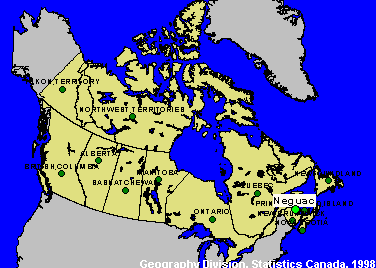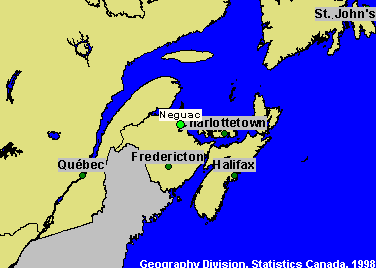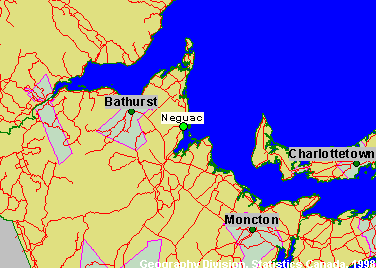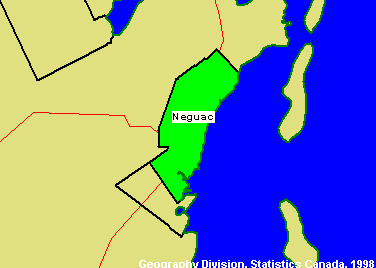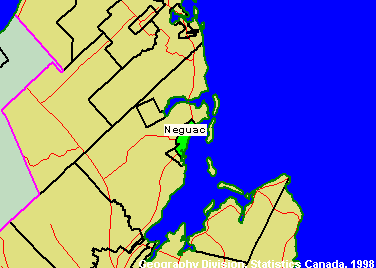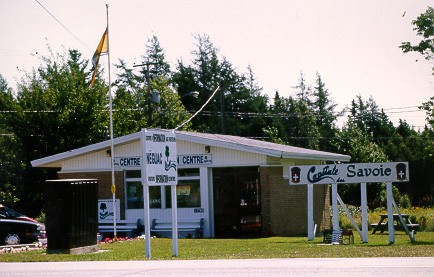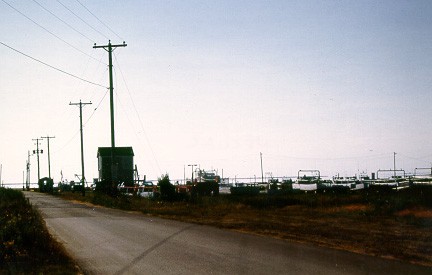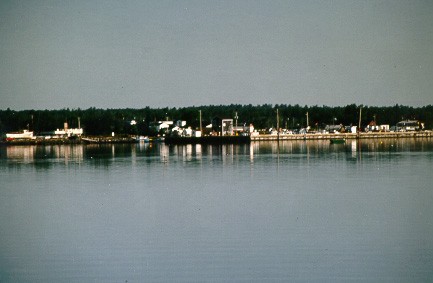Néguac, New Brunswick
Site Number: 7
CSD (1991): 1309038
Principal Researcher(s): David Bruce
Assistant Researcher(s): n/a
Néguac is located at the southern end of the Acadian Peninsula. The population is 1735. Main Street incorporates both residential and commercial land uses. On the opposite side of Main Street, roads lead off to various subdivisions. The population of the village is, for the most part, bilingual at a high level and this level is continually increasing.
Major events & stories
The fishery is the most important industry to Néguac and to the area. Most of the revenue from the industry is provided by clams, mussels, oysters, and periwinkles, given the decline in lobster, herring, and mackerel. The agricultural presence is small to non-existent and is limited to blueberries and market gardening. Forestry is very important especially in the northern part of the territory. There exists a very small industrial function in the village, including a fish processing plant, a lobster trap fabrication plant, and a concrete fabrication plant. There are 83 businesses employing 795 people.
Economic activity is declining. Forestry and fishing are important but can only support so many people. Néguac is in need of something that will bring employment to the area for both men and women. They need a factory or an industry; there has been some talk of a business in the textile industry coming to the village. Many businesses are based on tourism but the economy needs something that is not related to tourism; something that will supply jobs year round
There is an Historical Society based in the village that has published numerous books and maintains a site in Néguac. One project with Heritage Canada involves the renovations of Otho-Robichaud House as well as setting up an interpretation site.
The residents of the Village of Néguac have noticed an increase in the number of people leaving the village to further education or in search of employment.
Documents
These documents summarize the work completed and insights gained from updating Economic Capacity Profiles for the New Rural Economy2 (NRE2) sites. The initial set of Profiles was based on the 1996 Census and 2001 NRE site profiles data. The updated Profiles are based on 2001 Census data and 2003 NRE site profiles data.
On the map
